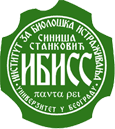Приказ основних података о документу
Scandium, yttrium, and lanthanide contents in soil from Serbia and their accumulation in the mushroom Macrolepiota procera (Scop.) Singer.
| dc.creator | Vukojević, Vesna | |
| dc.creator | Đurđić, Slađana | |
| dc.creator | Stefanović, Violeta | |
| dc.creator | Trifković, Jelena | |
| dc.creator | Čakmak, Dragan | |
| dc.creator | Perović, Veljko | |
| dc.creator | Mutić, Jelena | |
| dc.date.accessioned | 2019-01-29T12:41:50Z | |
| dc.date.available | 2900-01-01 | |
| dc.date.issued | 2019 | |
| dc.identifier.issn | 0944-1344 | |
| dc.identifier.uri | http://link.springer.com/10.1007/s11356-018-3982-y | |
| dc.identifier.uri | https://radar.ibiss.bg.ac.rs/handle/123456789/3242 | |
| dc.description.abstract | The mobility (fractionation) of rare earth elements (REEs) and their possible impacts on ecosystems are still relatively unknown. Soil samples were collected from two sites in central Serbia, an unpolluted mountain region (site 1) and a forest near a city (site 2). In order to investigate REE fractions (acid-soluble/exchangeable, reducible, oxidizable, and residual) in soils, BCR sequential extraction was performed. Additionally, the content of REEs was also determined in stipes and caps of the mushroom Macrolepiota procera, growing in the observed sites. Sc, Y, and lanthanide contents were determined by inductively coupled plasma mass spectrometry (ICP-MS), and results were subjected to multivariate data analysis. Application of pattern recognition technique revealed the existence of two distinguished clusters belonging to different geographical sites and determined by greater levels of Sc, Y, and lanthanides in Goč soil compared to Trstenik soil. Additionally, PCA analysis showed that REEs in soil were concentrated in two groups: the first consisted of elements belonging to light REEs and the second contained heavy REEs. These results suggest that the distribution of REEs in soils could indicate the geographical origin and type of soil. The bioconcentration factors and translocation factors for each REE were also calculated. This study provides baseline data on the rare earth element levels in the wild edible mushroom M. procera, growing in Serbia. In terms of bioconcentration and bioexclusion concept, Sc, Y, and REEs were bioexcluded in M. procera for both studied sites. | en |
| dc.publisher | Springer Berlin Heidelberg | |
| dc.relation | info:eu-repo/grantAgreement/MESTD/Basic Research (BR or ON)/172030/RS// | |
| dc.relation | info:eu-repo/grantAgreement/MESTD/Basic Research (BR or ON)/172017/RS// | |
| dc.relation | info:eu-repo/grantAgreement/MESTD/Basic Research (BR or ON)/173018/RS// | |
| dc.rights | restrictedAccess | |
| dc.source | Environmental Science and Pollution Research | |
| dc.subject | Ecology | |
| dc.subject | Rare earth elements | |
| dc.subject | Saprothropic | |
| dc.subject | Sequential extraction | |
| dc.subject | Wild edible mushroom | |
| dc.title | Scandium, yttrium, and lanthanide contents in soil from Serbia and their accumulation in the mushroom Macrolepiota procera (Scop.) Singer. | en |
| dc.type | article | en |
| dc.rights.license | ARR | |
| dcterms.abstract | Вукојевић, Весна; Стефановић, Виолета; Мутић, Јелена; Чакмак, Драган; Перовић, Вељко; Ђурђић, Слађана; Трифковић, Јелена; | |
| dc.rights.holder | © 2019, Springer-Verlag GmbH Germany, part of Springer Nature | |
| dc.identifier.doi | 10.1007/s11356-018-3982-y | |
| dc.identifier.pmid | 30604363 | |
| dc.identifier.scopus | 2-s2.0-85059529361 | |
| dc.identifier.wos | 000460831600016 | |
| dc.citation.apa | Vukojević, V., Đurđić, S., Stefanović, V., Trifković, J., Čakmak, D., Perović, V., & Mutić, J. (2019). Scandium, yttrium, and lanthanide contents in soil from Serbia and their accumulation in the mushroom Macrolepiota procera (Scop.) Singer. Environmental Science and Pollution Research, DOI:10.1007/s11356-018-3982-y. | |
| dc.citation.vancouver | Vukojević V, Đurđić S, Stefanović V, Trifković J, Čakmak D, Perović V, Mutić J. Scandium, yttrium, and lanthanide contents in soil from Serbia and their accumulation in the mushroom Macrolepiota procera (Scop.) Singer. Environ Sci Pollut Res. 2019;DOI:10.1007/s11356-018-3982-y. | |
| dc.type.version | acceptedVersion | |
| dc.citation.rank | M22 |

